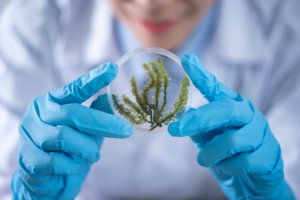
12 popular science myths debunked
The ever-popular 5-second-rule and 8 glasses of water a day – Did you grow up believing in any of these popular science myths? We are here to debunk these claims and give you the science low-down.
MYTH: Dogs are colourblind

FACT: No, dogs aren’t colourblind. They don’t see solely in black, white and grey. Their retinas are in fact able to process certain colours more efficiently than others. However, the colour range they perceive is limited compared to the spectrum we see. To put it in very basic terms, the canine colour field is dichromatic. This means dogs see colours on a yellow to blue spectrum; they have a trickier time processing red, green and orange. Read More
MYTH: Camels store water in their humps

FACT: No, camels store fat in their humps – not water. As a camel goes without food, its hump begins to shrink. If it stays hungry long enough, its hump will disappear. Instead, the camel’s respiratory system plays a key role in water conservation, as does its unique red blood cells. Read more
MYTH: Fallen food that is picked up in less than 5 seconds will not have picked up any germs

FACT: No, sorry to bust one of the most popular science myths! Bacteria can attach itself to your food even if you pick it up super-fast. Bacteria rely on moisture to grow, so any fallen food is considering potentially hazardous. With dry foods, it is conversely much tougher for bacteria to grow.
Read more
MYTH: All things age with time

FACT: Most animals eventually get old and die. But a few lucky species don’t seem to feel the weight of time, and just keep going and going. To put it another way, biologically immortal organisms do die, but they don’t seem to age. For example, red sea urchins are believed to be almost immortal and have been known to live for more than 200 years. They are found in the shallow water of the Pacific Ocean along the West Coast of North America. Read more
MYTH: Sugar is addictive as heroin

FACT: It is somewhat true that sugar can be as addictive as heroin. A 2016 study conducted by researchers at the Queensland University of Technology found that consuming excessive amounts of sugar elevates the brain’s dopamine levels in a way similar to drugs such as cocaine. Over time, dopamine levels fall, which means people have to consume more sugar to achieve the same “high” and avoid mild depression. This is similar to the experience drug users have when using addictive drugs. Because of this, researchers and nutritionists agree that we need to be eating less sugar.
Read more
MYTH: You must drink eight glasses of water a day

FACT: Another one of the popular science myths to be busted. Most healthy people can stay hydrated by drinking water and other fluids only whenever they feel thirsty. For some people, fewer than eight glasses a day might be enough. But other people might need more. The amount of sweating and/or exercise you do in a day is a factor in thirst. When considering total water intake, all forms of common beverages — such as water, coffee, tea, soda, and juice — help keep us very well-hydrated. Also, the moisture content in the foods we consume contributes significantly to our daily total water intake.
Read more
MYTH: All stars become black holes

FACT: Stellar black holes are formed when massive stars run out of fuel and collapse in on themselves in a cataclysmic implosion. However, not all stars end their lives this way. If a star is average or small in size (like our Sun), it will become a white dwarf—a stable, low-energy star that doesn’t have enough mass to collapse into a black hole. If the star is much bigger, it will become either a neutron star or a black hole. A star needs to be around 20 times the size of our Sun before it can become a black hole at the end of its life. Read more
MYTH: Vaccines weaken your immune system

FACT: No, vaccines do not weaken the immune system, and they do not make a child sick with the disease being vaccinated against. Vaccines introduce a killed/disabled antigen into the body so the immune system can produce antibodies against it and create immunity to the disease. An antigen is anything that stimulates an immune response. In vaccines, the antigens used are usually parts of a virus/bacteria or a substance that a virus/bacteria produces. That said, it’s not uncommon for a child to develop a mild runny nose and/or a cough after receiving the flu vaccine. This is because it takes about two weeks for the flu vaccine to become effective, and hence, someone in this situation might assume that the flu vaccine gave them the flu. Read more
MYTH: The microwave will turn your food radioactive

FACT: Household microwaves use non-ionizing radiation, low-frequency radiation that does not have enough energy to knock an electron off an atom or break apart an atom’s nucleus. Microwaves only give water molecules within the food enough energy to heat them up, but not make them radioactive. In addition, no one can completely shield themselves from radiation. Humans are exposed to radiation nearly every second of every day – from the natural radiation of rocks to the cosmic rays of space. Read more
MYTH: The different parts of the tongue sense different tastes

FACT: You sense all the different types of tastes with all parts of your tongue, but some areas have slightly increased sensitivities. The confusion stems from a mistranslation of 1901 German thesis. Whilst the German researcher found the tip and the edges to be the most sensitive, he didn’t claim that different parts sensed different tastes. Read more
MYTH: Eating chocolate gives you acne

FACT: There is no direct link that suggests chocolate can give you acne. However, dairy and sugar can cause fluctuations and increase the production of sebum (oil) on your face and/or body. Hence, having a healthy and balanced diet is the key to preventing acne. Read more
MYTH: Deoxygenated blood is blue

FACT: Blood is always red. Deoxygenated blood is actually dark red, whilst oxygenated blood is bright red. Your veins, which carry deoxygenated blood, appear blue or green from underneath your skin because of the way light interacts with the skin. Blue light is better than red light at penetrating the skin to illuminate veins. The reflected blue light is what our eyes see. Read more
Did you like our list of popular science myths? What are some other science myths that you would like us to bust? Tell us in the comments and let us know. Happy weekend!
Don’t forget to check out our 15 science fiction movies to watch this weekend and our blog on 11 science experiments to do at home.





